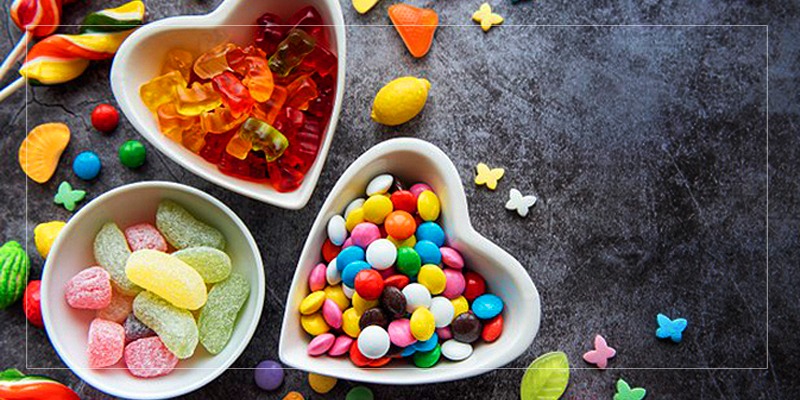Food and Colour
Food colour and flavour are closely related. In fact “it is common to see food and anticipate certain flavours,” according to V Sudershan Rao, former Deputy Director from the National Institute of Nutrition, Hyderabad. colour represents flavour or the physiological effect of the item to be swallowed. For example, in the mind of the consumer “a red apple will be sweet, a green plum will be sour and a brown ice cream will have a chocolate flavour.”
The Right Colour
Armed with this knowledge, as Food Manufacturers, we must be careful in choosing the right colour for a product, because colour is linked to our perception of that food. For instance, would you buy potato wafers if they were seasoned with a dark brown or muddy coloured product? Probably not. Brown wafers would make you feel ill, like the product may be spoiled or covered in fungus.
Keeping all this in mind, kids’ products should have flashy colours, while Health drinks should be subtle in colour. When making a product, we must consider the product’s nature and the end consumer. For instance, children may like wild colours, but neon foods might cause parents to feel that there’s no health benefit to that product or that it isn’t tasty. Whereas, sports drinks must come across as healthy without a medicinal flavour. Perhaps, a bright red candy and a light blue Sports Drink would be highly marketable.
Or, as V Sudershan Rao put it, “the colour of food not only [creates] expectation, but provides clues as to the condition of the food. For example, in the same way [the] the yellow colour of peach indicates [that it’s] ripe, the dull brown colour of Strawberry Jam indicates that it’s old.”
The Colour of Medicine
Even in the Pharmaceutical Industry, colour plays an important role. The colour of pills affects perception of both
efficacy and taste. It has been observed that “red and pink tablets are preferred over other colours. Strangely, [it was] found that 14% of people [feel that] pink tablets taste sweeter than red tablets, whereas a yellow tablet is perceived as salty, irrespective of its actual ingredients. [Moreover], 11% [of people feel that] white or blue tablets taste bitter, and 10% said orange- coloured tablets [are] sour,” according to R.K. Srivastava and colleagues.
And, the colour of tablets may even aid in the placebo effect or cause a patient to feel that the pills aren’t working. For example, seafoam green and light blue are associated with medicines, consumers feel that these tablets are effective and not bitter. However, a neon coloured pill may have a bad psychological effect on consumers.
Conclusions
Throughout history, colour and food have been linked. And, “history is filled with accounts of the widespread application of natural colours such as turmeric, paprika and saffron,” according to V Sudershan Rao.
In India, “spices like Turmeric, Red Chilli powder and Saffron were used not just for their colour but also for their flavour, pungency and medicinal properties.” As food manufacturers, it’s up to us to continue this tradition of pairing foods with colours that compliment taste and effect. It was 600 years ago that the Jalebi, a sweet, was coloured deep orange using Saffron. The Saffron marketed the Jalebi, though the word “marketing” didn’t yet exist, as a delicious dessert.

